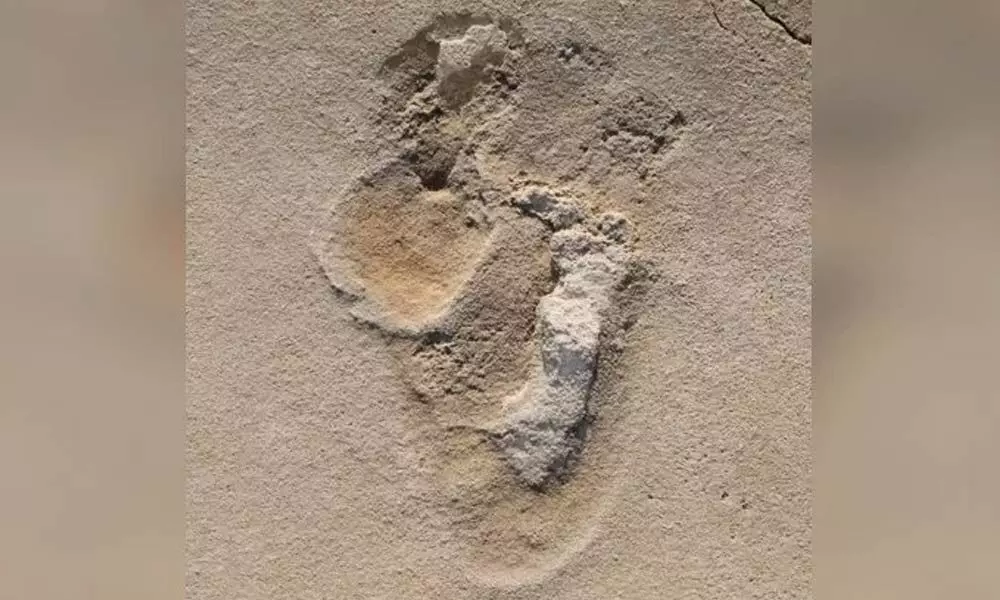Live
- Mahesh Babu’s AMB Cinemas set to open in Bangalore
- YSRCP MP candidate Vijayasai Reddy assures protection of Muslim interests
- Vishwak Sen completes dubbing for ‘Gangs of Godavari’ teaser
- Tamannaah summoned by Maharashtra Cyber Cell over alleged Fairplay betting app involvement
- CM Jagan Files Nomination in Pulivendula Amidst Enthusiastic Support
- YSRCP MLA Candidate Mekapati Vikram Reddy Files Nomination for Atmakur Constituency
- Former Minister Dr. Ponguru Narayana participates in Sri Ram Rathotsavam at Sri Kodandaramalayam, Balajinagar
- Cong wants to rob inheritance rights of common people: Anurag Thakur
- Revanth’s tall promises are ‘near impossible’ to achieve: Eatala
- New DOT Regulations: Airlines Must Provide Cash Refunds for Flight Cancellations and Delays
Just In
Study Shows That Ancient Paths Could Be the World's Oldest Hominin Footprints


One of over 50 footprints identified in 2017 in Crete. (Per Ahlberg, Uppsala)
- There are no early Neanderthal writings that neatly summarise all of the differences between Australopithecus and Orrorin.
- However, bones aren't the only remains left behind by our human predecessors; in certain cases, their footprints have been preserved in the sand.
Scientists believe the ancient tracks may be the oldest hominin footprints ever discovered. It's quite difficult to decipher pre-human history. There are no early Neanderthal writings that neatly summarise all of the differences between Australopithecus and Orrorin. While more ancient bones are being discovered all the time, the number of species of Homo, Graecopithecus, and all the genera in between is still very limited, making it difficult to analyse and catalogue fossil discoveries into one of the many species of Homo, Graecopithecus, and all the genera in between.

© 2024 Hyderabad Media House Limited/The Hans India. All rights reserved. Powered by hocalwire.com






